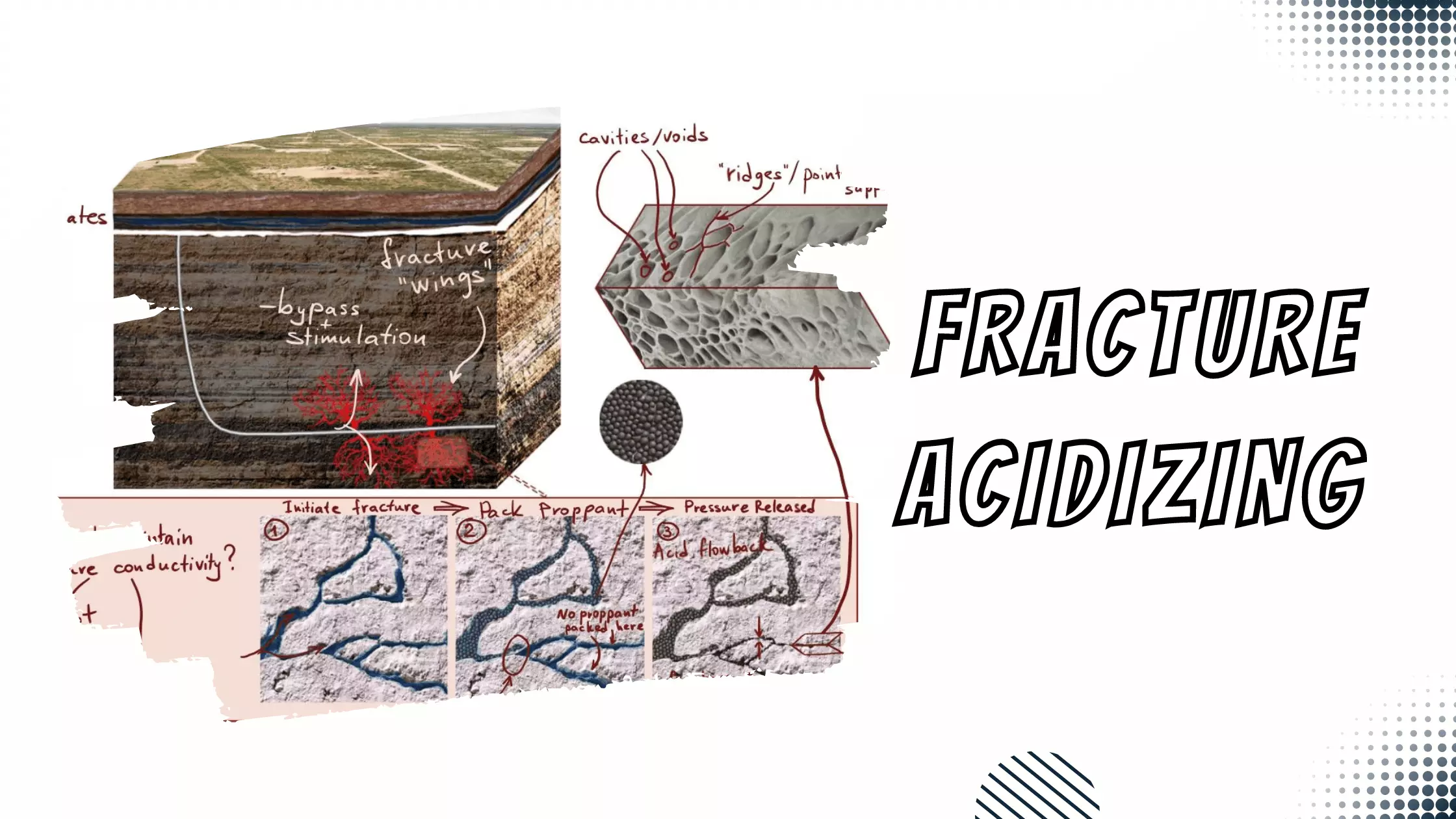Learning Objectives
After completing this topic “Introduction to Acidizing“, you will be able answer to:
- What is acidizing process?
- What is acidizing in drilling?
- What is the difference between hydraulic fracturing and acidizing?
- What are the differences between matrix acidizing and fracture acidizing?
- Which acid is used in acidizing process?
- What is iron control agent?
- How is HCl used in fracking?
- What is SandStone acidizing?
- What is in hydrochloric acid?
- What is stimulation in oil and gas?
- What is acid job in oil industry?
- How do you make hydrofluoric acid?
- What are the objectives of matrix stimulation?
By completing this topic and then applying the learnings in your job, you will be able to attain Basic Application Competence Level in Acidizing and Other Chemical Treatments.
Background and Definitions
Acidizing is a chemical process that dissolves unwanted substances in the formation, pipe, surface equipment, or flow-lines. In the case of treating formation damage, acid removes flow-restricting particles, scale deposits, and minerals in the reservoir or in the immediate wellbore vicinity. The acid mixture holds the dissolved substance in solution until it is either removed from the well system or overflushed a safe distance into the formation; then, the well can produce at its natural potential. Little, if any, increase in productivity will result unless formation damage actually exists.
When a fracture is created during an acidizing operation in carbonate reservoirs, increased flow capacity can result from acid etching of the fracture faces. Here, large increases in productivity are possible by creating a highly conductive flow path through the formation.
Acidizing is among the oldest techniques in well stimulation processes, having been introduced in the late nineteenth century. Table 1 (below) lists the major events in the early history of acidizing.
| Year | Event |
|---|---|
| 1894 | Acid was used to stimulate oil production in limestone formations in Lima, Ohio. |
| 1896 | First patent related to acid treatments of wells was issued to Herman Frasch. |
| 1928 | Acid was used in Glen Pool, Oklahoma by Gypsy Oil Company, a subsidiary of Gulf Oil Company. |
| 1929 | Subsidiary of Gulf Oil Corporation injected uninhibited hydrochloric acid under pressure into a well in Lee County, Kentucky. |
| 1930 | Acidizing experiments were discontinued. |
| 1932 | Dow Chemical Company and Pure Oil Company used an acid treatment of 15% hydrochloric acid plus arsenic as an inhibitor on a well in the Greendale Pool of Midland County, Michigan. |
| 1932 | Dow Chemical Company and Pure Oil Company used an acid treatment of 15% hydrochloric acid plus arsenic as an inhibitor on a well in the Greendale Pool of Midland County, Michigan. |
| – | Patents were issued to Grebe and Sanford of Dow Chemical Company for treatments of oil wells with chemicals containing a corrosion inhibitor. |
| – | R.H. Carr of the Pure Oil Company was issued a patent on the technique of chemically treating an oil well by the balanced fluid column method. |
| – | Dowel I Chemical Company formed Dowel I Inc. (now Dowell-Schlumberger from its Well Service Group — whose original main responsibility was stimulation of Dow’s brine wells. |
| – | Carey K. West formed the Chemical Process Company, a predecessor to Byron Jackson, Inc. (now BJ-Hughes). |
| 1933 | J.R. Wilson with Standard Oil Company filed a patent on a technique for treating sandstone formations with hydrofluoric acid. |
| 1935 | Halliburton Oil Well Cementing Company (now Halliburton Services) began acidizing oil wells. |
| 1940 | Dowell (now Dowell-Schlumberger) began the first commercial use of mixtures of hydrochloric and hydrofluoric acid. |
 Petro Shine The Place for Oil and Gas Professionals.
Petro Shine The Place for Oil and Gas Professionals.



